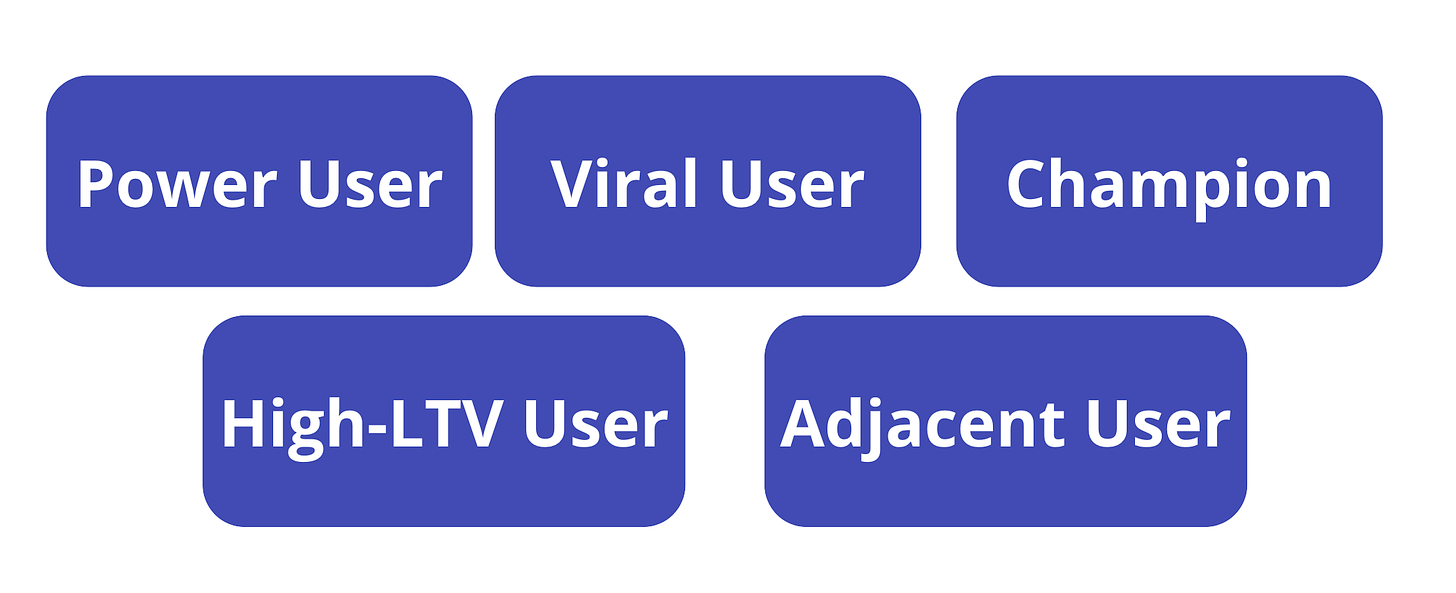Most companies view users through a single lens of value: who is our core user? A core user is your target persona within the main product use case. They are at the epicenter of the product-market fit and hold company’s undivided attention. But you’d leave a lot on the table by valuing core users only. Other users can play a unique role in shaping the overall business strategy, customer experience, and their contributions to the success of your product.
This blog will unravel five important yet frequently missed user archetypes.
Five User Archetypes
Five important yet frequently missed user archetypes to consider within the product user base:
Power user
Viral user
Champion
High-LTV user
Adjacent user
Let’s dive in!
Power User
Power users are customers who engage with the product at a much higher frequency than the expected core level of engagement. Their usage often verges on overutilization, and they tend to be the most vocal customers when it comes to requesting features and submitting suppo…
Keep reading with a 7-day free trial
Subscribe to Elena's Growth Scoop to keep reading this post and get 7 days of free access to the full post archives.



